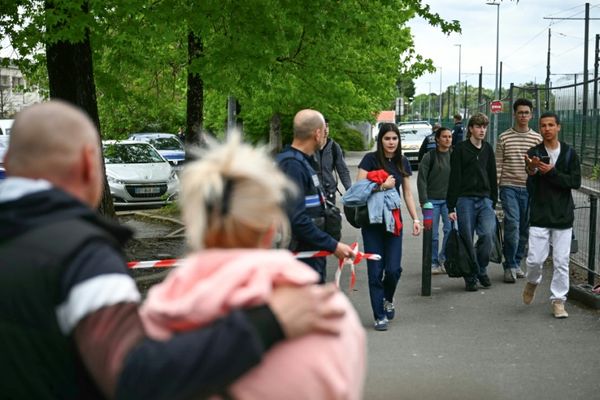Religious leaders say they are frustrated the Victorian government has stalled on a promised education campaign about the ancient meaning of the swastika, weeks before it becomes a criminal offence to publicly display the Nazi symbol.
From December 29, people in Victoria who display the Nazi symbol — also known as the Hakenkreuz — could face 12 months in jail and a $22,000 fine.
The laws will not be applied to faith communities who use similar-looking religious swastikas, but some fear they will wrongly be accused of supporting Nazi ideology.
The swastika has had huge cultural significance in the Hindu, Buddhist and Jain religions for thousands of years, representing prosperity and good fortune.
This week it has proudly been on display in homes during Diwali celebrations.
The swastika is often drawn in temples and on a person's possessions as a form of blessing.
Followers say their ancient sign was misappropriated by Hitler's regime, and the Nazi version of the symbol continues to be used in acts of hatred against the Jewish community.
The traditional Hindu swastika features four dots between the arms of the cross, while other religious swastikas have numerous variations to shape and orientation.
The Nazi symbol is usually depicted as a black cross tilted at 45 degrees, placed inside a white circle with a red background.
Poor education could 'open the doors towards vilification'
A government-funded education campaign explaining the differences between the Hakenkreuz and religious swastika was promised when the Nazi symbol ban was passed in the Victorian parliament in June.
But the planning of the campaign has dragged on for months.
The Victorian representative of the Hindu Council of Victoria, Makarand Bhagwat, said his association was considering lobbying the government to delay the start date of the laws by six months.
"If the education is not done properly, it will potentially open the doors towards vilification of Hindus, Buddhists and Jains," he said.
Mr Bhagwat said his association had already created its own ads and paid for them to run on a Melbourne talkback radio station.
He said the government's education campaign should feature on billboards, social media and television to reach a wide audience.
However, the campaign design and its commencement date remain unclear.
A Victorian government spokesperson said the campaign would begin "before the legislation takes effect".
The spokesperson said $500,000 had been allocated towards the campaign, which would have input from religious groups, the Australian Multicultural Foundation and communications agency ThinkHQ.
The Buddhist Council of Victoria's vice-president Diana Cousens said the process had been "slow off the mark".
Dr Cousens was hopeful the new laws would eventually allow religions to "reclaim" the symbol and change perceptions in society that the swastika belonged to the Nazis.
"The only time you ever see a swastika in common media is in a World War II movie … or you see graffiti on a synagogue by anti-Semites," she said.
"It's obviously a hate campaign, and that's the opposite of the original and traditional meanings."
Symbol banned amid resurgence of neo-Nazism
Dvir Abramovich, a Jewish academic who heads up the Anti-Defamation Commission and campaigned for the laws, said it was "not ideal" that the education had not started yet.
"I would have liked the campaign to begin months ago," Dr Abramovich said.
"I still want to acknowledge the fact that the government has passed the law and has put in the measures for the campaign to begin.
"White supremacism is not history, it's current affairs. It's happening almost on a daily basis. This is an evolving threat."
The ban on the Nazi symbol in Victoria comes amid a resurgence of neo-Nazism, with far right groups now a major focus of Australian intelligence agencies.
Similar laws were passed in NSW in August, and legislation has also been introduced into the Tasmanian and Queensland parliaments.
Earlier this month, campaign posters of Victorian MP David Southwick were defaced with Nazi symbols in his electorate of Caulfield, which has a large Jewish population.
Other anti-Semitic incidents in Melbourne schools have also received publicity.
In 2020, a large Nazi flag was flown over a home in north-west Victoria, sparking complaints to police and calls for laws to be changed to outlaw the symbol.







